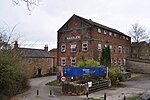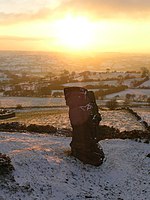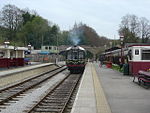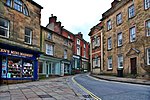Ashleyhay
Civil parishes in DerbyshireEngvarB from June 2016Geography of Amber ValleyTowns and villages of the Peak DistrictVillages in Derbyshire

Ashleyhay (Old English Enclosure at the ash-tree wood or clearing ) is a village and civil parish in the Amber Valley district of Derbyshire, England, about five miles north-west of Belper. It is also situated one and three-quarters of a mile south of Wirksworth and eleven miles north of Derby city centre. According to the 2001 census it had a population of 105, increasing to 118 at the 2011 Census.
Excerpt from the Wikipedia article Ashleyhay (License: CC BY-SA 3.0, Authors, Images).Ashleyhay
Amber Valley
Geographical coordinates (GPS) Address Nearby Places Show on map
Geographical coordinates (GPS)
| Latitude | Longitude |
|---|---|
| N 53.062 ° | E -1.566 ° |
Address
DE4 4AJ Amber Valley
England, United Kingdom
Open on Google Maps








